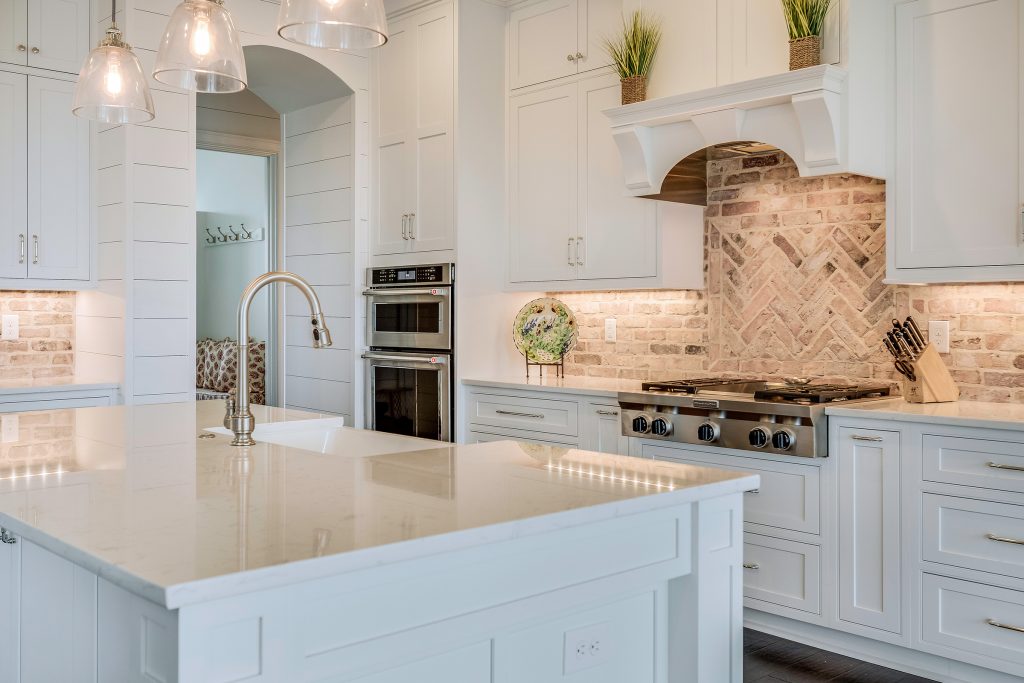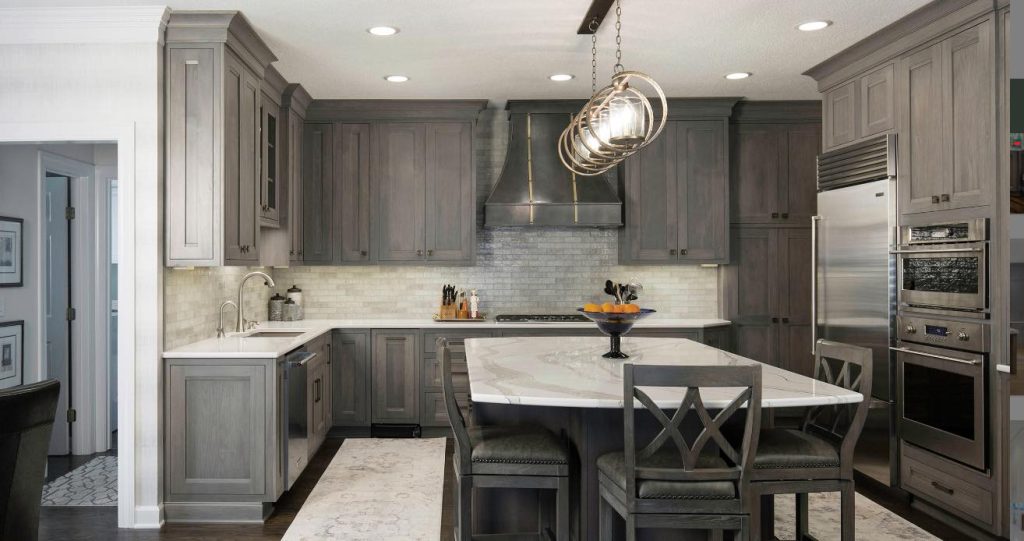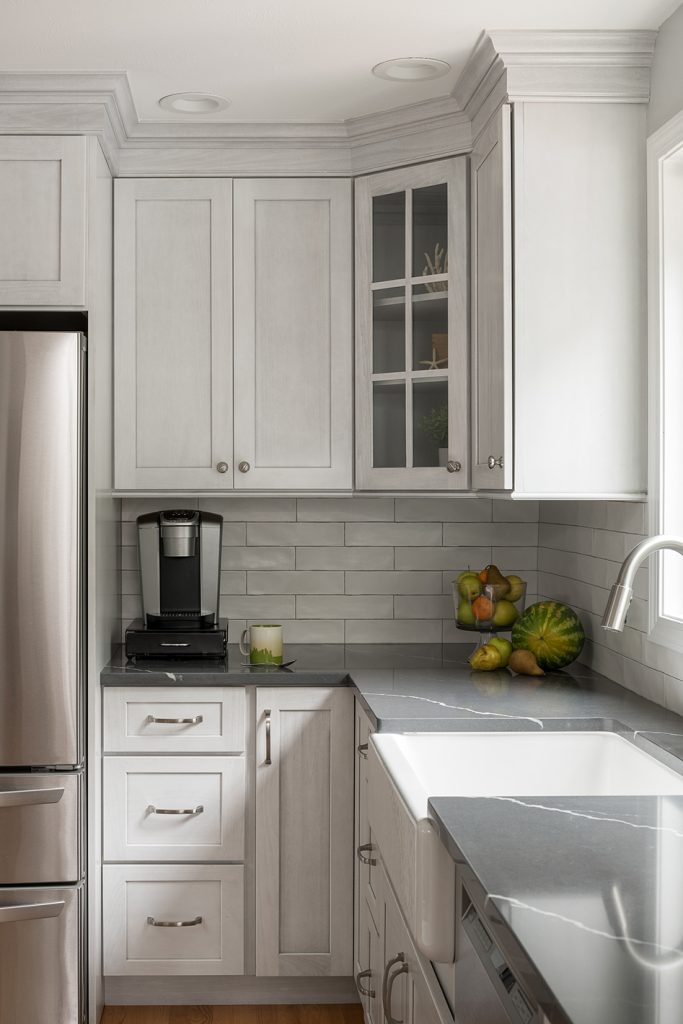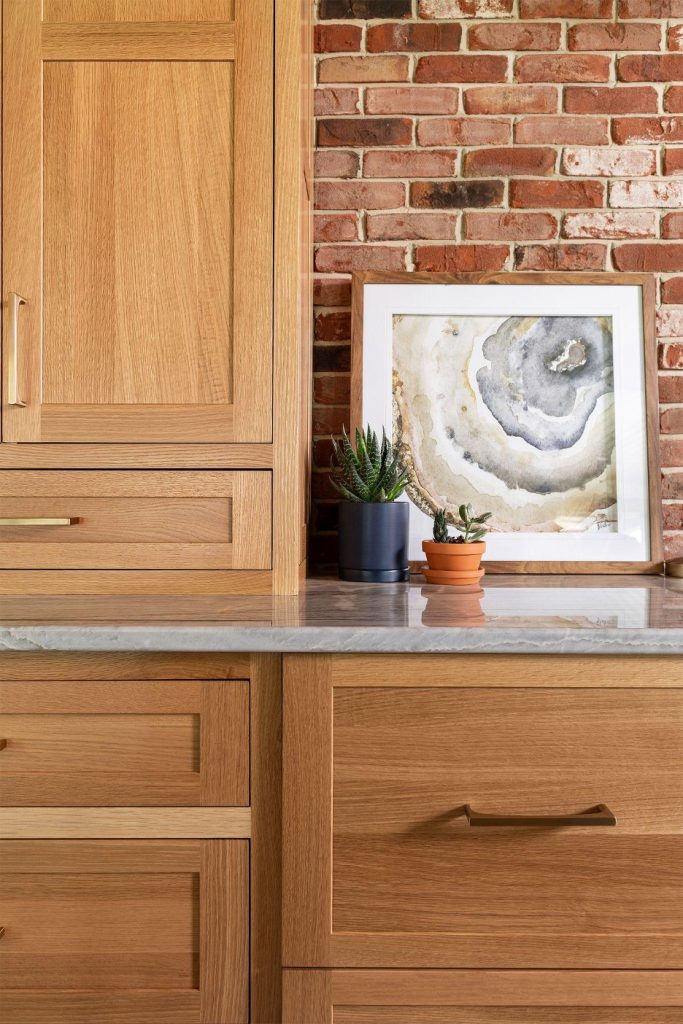Blend tones, materials, and finishes for a seamless, designer-level kitchen.
Choosing your cabinets is a major decision. Choosing your countertops is another. But the real magic? That happens when the two work together—visually, tonally, and functionally.
A cohesive pairing between cabinets and countertops is what separates a decent kitchen from a polished, high-end space. It doesn’t mean everything has to match—but it does mean everything should make sense together.
Here’s how to get that balance just right.

1. Decide on Your Lead Material First
Start with the finish that matters most to you—whichever one is harder to change or sets the tone for the space.
- If you’re going custom or semi-custom with cabinetry, choose those finishes first.
- If you’re working with an existing countertop, match your cabinetry accordingly.
- If you’re remodeling from scratch, base your decision on the vibe you’re going for: warm and organic? Sleek and modern? Light and airy?
This gives you an anchor—so every other material decision supports that lead tone.

2. Complement, Don’t Compete
The goal is harmony—not duplication. Matching your countertop exactly to your cabinets can fall flat. Instead, mix textures and tones that play off each other.
Pairing tips:
- Light cabinets + medium or dark countertops = grounded contrast
- Dark cabinets + light countertops = modern, open feel
- Wood cabinets + stone countertops = organic, textural balance
- Painted cabinets + matte countertops = contemporary, clean vibe
Use contrast to add interest, but keep undertones aligned (more on that next).
3. Pay Attention to Undertones
This is one of the biggest mistakes people make: choosing colors that technically “match”—but clash because their undertones are off.
Quick breakdown:
- Cool undertones have hints of blue, gray, or green
- Warm undertones lean toward red, yellow, or gold
- Neutral undertones sit somewhere in between (taupe, greige, soft whites)
Make sure your cabinet finish and countertop share the same undertone family—even if the colors themselves are different.

4. Think in Layers, Not Just Swatches
Instead of seeing your cabinets and countertops as two individual choices, treat them as part of a layered material story.
Add visual depth by combining:
- A smooth, painted cabinet finish with a textured or veined countertop
- Natural wood grain with a clean, solid surface
- Matte cabinets with glossy stone for subtle contrast
This creates a more dimensional, design-forward look—without overwhelming the eye.
5. Bring in Samples (and Good Lighting)
Colors and materials look wildly different in real life than they do online or under showroom lighting. Always bring samples home, and view them:
- In natural daylight
- At night under your kitchen lighting
- Next to each other, side by side
Bonus tip: lay your cabinet, countertop, and backsplash samples together to see how the full story comes together.

6. Add Consistency Through Accents
If your cabinet and countertop materials are visually different (as they often should be!), you can still tie everything together with intentional accents.
Ways to unify the space:
- Repeat metal finishes (hardware, lighting, faucet)
- Choose a backsplash that bridges the gap in tone or texture
- Use decor—wood accents, ceramics, textiles—to reinforce your palette
- Stick to a consistent color temperature in your lighting
These details help the space feel curated, not chaotic.
✨ From Contrast to Cohesion
The best kitchen designs don’t rely on matchy-matchy finishes—they use thoughtful contrast, aligned tones, and tactile variety to create a space that feels both balanced and elevated. When your cabinets and countertops work together, the whole room comes to life.

